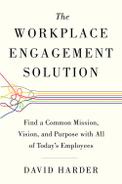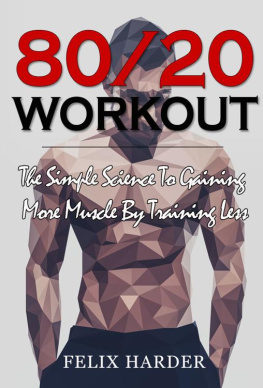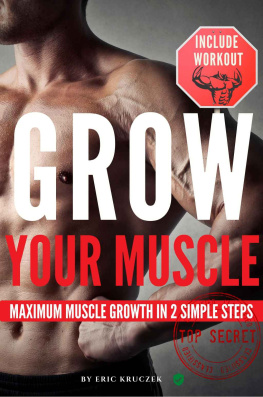Copyright 2015
All rights reserved. This book or any portion thereof
may not be reproduced or used in any manner whatsoever
without the express written permission of the publisher
except for the use of brief quotations in a book review.
All pictures are under creative common license by db.everkinetic.com
Your Bonus :
Get FREE ACCESS To My
Bodybuilding For Beginners Program

The 3-Part Program Includes:
1) My Workout Routine That Made Me Gain 10 Pounds Of Lean Muscle in under 6 Months, Training Only 3 Times Per Week
2) Everything You Need To Know About Workouts, Nutrition and More
3) And All The Beginner Mistakes You Should Avoid
I care about my readers and only give advice which is proven to work and that I have personally tested.
>>Click Here To Get FREE ACCESS To My Program<<
Other Books By Felix Harder



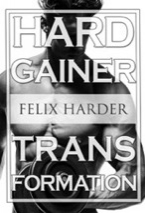


Click On The Cover To Go To The Book
Table Of Contents
Ab Crunch
Ab Crunch with Legs on Stability Ball
Stability Ball Ab Crunch
Exercise Ball Jackknife
Twisting Crunch / Cross Body Crunch
Cable Seated Crunch
Decline Crunch
Decline Cross Crunch
Leg Raise
Bent Knee Hip Raise
Air Bike
Hanging Leg Raise
Side Plank Exercise
Ab Rollout
Ab Rollout On Knees
Dumbbell Side Bends
Abdominal Draw In
Introduction
Getting a six-pack is high on everybodys list of fitness goals. Poll after poll has shown that wanting to build their abdominal muscles is what brings most men into the gym. At the same time, its the muscle group that women find the most attractive in men.
Unfortunately, due to all the hype around six-pack / abdominal training, there is a lot of misguiding information out there. Infomercial workout equipment and most fat loss pills are a complete waste of your money and time. Even if they might promise it, no product is going to magically make your mid-section more muscular and your abs more toned.
Great abs require a great workout. This workout doesnt have to be hours long, it just has to hit the right muscles with the right amount of repetitions. Additionally, you need the right diet and supplements. Thats where this book comes into play. Its going to cover all these aspects and more. We will start with the anatomy of the ab muscles. You will see that not all muscles are created equal and they need different training.
The second part of the book covers the best workout routines you should be doing for optimal muscle growth. I listed every exercise and the exact amount of reps you should be doing. Part three is all about nutrition and supplements. You probably know that the right foods are even more important than the right training. But what exactly should you eat, and what supplements do you need? Dont worry, Ive got you covered.
At the end of the book I included a list of the bestab exercises. Each exercise is explained in detail, with a picture, safety tips and possible variations. That way you will never have to worry about finding new exercises when working out your core.
Abdominal Muscles Anatomy
In order to develop great abs, you need to understand the basic anatomy of all the different muscles involved. This includes their functions and specific location. Only when you know how each muscle works, can you train them properly. Of course, you dont need to remember every last detail about muscle anatomy. To train effectively, focus on understanding where the abdominal muscles are located and what their exact functions are.
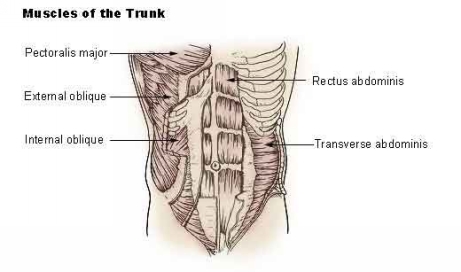
Yourcoreis made up of several different muscles. On the anterior core those are:
- The three muscle groups of the deep layer (thoracic diaphragm, pelvic floor, transverse abdominis). They help pressurize your inner-core musculature, which is important for heavy exercises such as squats or deadlifts.
- The intermediate layer with its most important muscle, the internal oblique, which helps with respiration and torso rotation.
- The superficial layer which includes the external oblique and the rectus abdominus. These are the muscles you mean when talking about a six-pack.

Next to the muscles on the anterior core, there are three important muscles on the posterior core (see picture above):
- The multifidus, which helps control small movements throughout your spine
- The quadratuslumborum, which is important for controlling the different motions in your core.
- The erector spinae, a subgroup of muscles dedicated to straightening the back.
Rectus Abdominis Anatomy

Most important facts:
- The rectus abdominis is a sheet of muscle, which runs laterally from sternum to pelvis.
- Is visible from the outside and usually referred to as the six-pack muscle.
- The number of packs your absshow is determined by the number of connective tissues crossing your abdominal region (called bands of fascia).
Detailed explanation:
The rectus abdominusmuscle originates (starts) at the bottom of the sternum and inserts (ends) at the pelvis into the fifth, sixth, and seventh ribs. Its main function is topull your knees up to your torso, increase abdominal pressure, and stabilize the pelvis. When we speak about trainingthe upper or lower abs, you should keep in mind, that they are part of the same muscle group and simplytwo different ends of it.
Training:
The basic exercises to train the rectus abdominusmusclearecrunches and sit-ups. There are literally hundreds of variations to these two traditional exercises, which will affect how the muscle is working. Static or non-movement contractions like the plank can also be used to strengthen your rectus abdominis.
External Obliques Anatomy

Most important facts:
- The external obliquesrun diagonally down the sides of your bodytoward the midline of the body.
- Are visible from the outside and provide the "V" shape that frame the lower abs.
- Twists the body from side to side.


